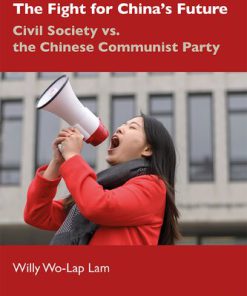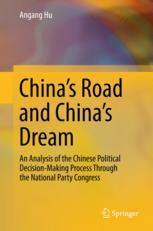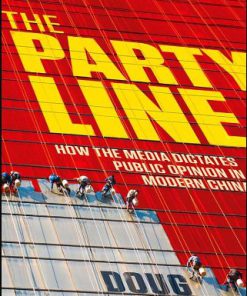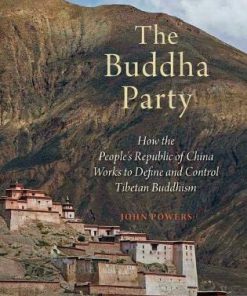How the Communist Party of China Manages the Issue of Nationality An Evolving Topic 1st Edition Shiyuan 3662484625 9783662484623
$50.00 Original price was: $50.00.$25.00Current price is: $25.00.
How the Communist Party of China Manages the Issue of Nationality An Evolving Topic 1st Edition Shiyuan Hao – Ebook Instant Download/Delivery ISBN(s): 3662484625 9783662484623
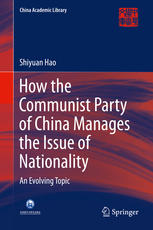
Product details:
- ISBN 10: 3662484625
- ISBN 13: 9783662484623
- Author: Shiyuan
This book introduces the background of China’s issue of nationality from the very beginning. Throughout the country’s history, all the nationalities that lived and prospered on Chinese land created a pattern of cultural diversity within national unity through their interaction and integration. The formation of this pattern is due not only to the geographical fact that China covers a broad expanse on the Asian continent but also to the historical fact that it is home to disparate and ancient human heritages, and to culturally diverse historical sources. The book’s five chapters explain the evolution of the CPC’s policy towards nationalities. At the time of the PRC’s founding, the Common Program (in essence an interim Constitution) passed by the Chinese People’s Political Consultative Congress (which was composed of people from all sectors of society and all of China’s nationalities) not only declared that people of all China’s nationalities had equal rights, but also stipulated that: regional national autonomy would be practiced in all areas where minority nationalities were concentrated; that all nationalities had the right to develop their native languages and culture and to maintain or reform their customs and religious beliefs; and also mandated that people’s governments support the development of minority nationalities in the areas of politics, the economy, culture and education. In the final section, the book demonstrates that the subject of how the CPC addresses nationality-related issues is a dynamic one that encompasses the past, present and future, and is simultaneously an answer, a process and a question.
Table of contents:
Chapter 1: Introduction
References
Chapter 2: Taking into Perspective the Historical Conditions in China and Building a United Mult
2.1 The People of the Five Directions Create a Multi-nationality Country
2.1.1 Chinese Civilization Is Rooted in Multiple Sources and Many Currents
2.1.2 “Categorize the Clans and Make Distinctions among Things”, and “the People of the
2.1.3 “Unite All the Lands under Heaven”, “Rule According to Local Customs”, and “Harm
2.1.4 All the Nationalities Together Building a United Country
2.2 The “Racial Revolution”, “Republic of the Five Nationalities”, and Construction of a
2.2.1 China “Watches the World with Its Eyes Open”
2.2.2 Nationality and Race-Nationalism
2.2.3 The Revolution of 1911 and the Republic of “the Five Nationalities”
2.2.4 Joint-Provinces Autonomy and a Federal State
2.2.5 Building “a State Nation” in “a Melting Pot”
2.3 The Chinese Nation and a United Multi-nationality Country, National Self-determination, Autono
2.3.1 National Self-determination, Autonomy and a Federal Government
2.3.2 “The Clan and State Nation” as Described in the Three People’s Principles, Namely De
2.3.3 Self-determination and Self-rule of Minority Nationalities
2.3.4 The Liberation of Minority Nationalities Was an Integral of the Chinese Revolution
2.3.5 Frontier Crisis and the Broadest Possible National United Front
2.3.6 The Term Chinese Nation Is a General Term Encompassing All of China’s Nationalities
2.3.7 Establishing a United People’s Republic and Exercising Regional National Autonomy
References
Chapter 3: Practicing the Principle of Nationality Equality and Exercising Regional National Auto
3.1 Identifying Nationalities and Carrying out Democratic Reform
3.1.1 The Large Family of the Chinese Nation
3.1.2 Peaceful Liberation and Democratic Reform
3.1.3 The United Front and the Upper Class of Minority Nationalities
3.1.4 Training a Cohort of Minority Nationality Cadres
3.2 Nationality Policy and Equal Rights for Minority Nationalities
3.2.1 Political Equality
3.2.2 Economic Development
3.2.3 Cultural Prosperity
3.2.4 Social Security
3.2.5 Opposing Two Kinds of Nationalism
3.3 Comprehensively Exercising the System of Regional Autonomy
3.3.1 Why Did the CPC Give up the Federal System?
3.3.2 How Did China Exercise Regional National Autonomy?
3.3.3 The System of Regional National Autonomy Is an Unprecedented New Creation
References
Chapter 4: Developing the Western Region in the Primary Stage of Socialism
4.1 Exploring Nationality Affairs and Its Major Setbacks
4.1.1 Understanding the General Challenge for the Chinese Society
4.1.2 From “Advancing Cautiously” to “Achieving Greater, Faster, Better, and More Economical
4.1.3 To Jump into Socialism in One Step
4.1.4 “Nationality Issues Are Essentially Class Issues”
4.2 The Primary Stage of Socialism and Nationality Issues
4.2.1 Setting Things to Rights and Reform and Opening Up
4.2.2 Formulating and Promulgating the Law on Regional National Autonomy
4.2.3 “Two Issues of Overriding Importance” with Economic Development as the Central Task
4.2.4 Challenges Posed by the Collapse of the Soviet Union
4.3 The Strategy for Developing the Western Region and Solving Nationality Issues
4.3.1 Guidelines for Nationality Work
4.3.2 Implementing the Strategy for Large-Scale Development of the Western Region
4.3.3 All Nationalities Striving Together for Common Prosperity and Development
4.3.4 Remarkable Achievements in the Large-Scale Development of the Western Region
4.3.5 Arduous Tasks Ahead in the Large-Scale Development of the Western Region
References
Chapter 5: Safeguarding National Unity, Opposing National Separatism
5.1 Occupation of Chinese Territory and Erosion of China’s Sovereignty by Imperial Powers
5.1.1 Imperialist Annexation and Occupation of Chinese Territory
5.1.2 Imperialists Carving Up China
5.1.3 “Suzerainty” for “De-Sovereignization”
5.2 The “Historical Legacy” of Nationality Issues in China Left by the Imperial Powers
5.2.1 The “Tibet Issue” Created by the British
5.2.2 “Taiwan Independence Force” Cultivated by Japanese and US Imperialism
5.2.3 Soviet Support of “East Turkestan Forces”
5.3 Safeguarding National Unity and Opposing Ethnic Separatism
5.3.1 The Need for the People’s Liberation Army to Enter Tibet
5.3.2 Opposing Internationalization of the “Tibet Issue”
5.3.3 Peaceful Reunification and “One Country, Two Systems”
5.3.4 Curbing Taiwan Independence and the Anti-Separation Law
5.3.5 Consolidating Border Defenses
5.3.6 The Shanghai Cooperation Organization and Fighting against Terrorism, Separatism and Extrem
5.4 China’s Long and Arduous Fight Against Separatistism
5.4.1 Continuing to Strike a Balance between Development and Stability
5.4.2 Upholding and Improving the System of Regional National Autonomy
5.4.3 Firmly Adhere to Peaceful Development as the Central Theme of Cross-Strait Relationship
References
Chapter 6: Building a Harmonious Society and Achieving Sound Development
6.1 Building a Harmonious Society and the Relations between Nationalities
6.1.1 Comprehensive Approach Taking into Consideration the Diversity of Interests
6.1.2 The Harmony of Nationality Relations
6.1.3 Respecting Differences and Embracing Diversity
6.2 Cultural Resource Protection for a Harmonious Society and Sound Development
6.2.1 Respect for Culture in a Harmonious Society
6.2.2 Sound Development and Cultural Resources
6.2.3 Developing and Enriching the Cultures of Minority Nationalities
6.3 The Symbiotic Sound Development of Humanity and the Ecological Environment
6.3.1 Biodiversity and the Ecological Crisis in the Western Region
6.3.2 Sound Development and Ecological Awareness
6.3.3 Development Problems Still Awaiting Solution
References
Chapter 7: Conclusion
People also search:
explain how the communist party came to power in china
how has the communist party of china kept its power
how does the chinese communist party operate
how did the communist party gain power in china
how did the communist party gain support in china
You may also like…
Business & Economics
Unending Capitalism How Consumerism Negated China s Communist Revolution Karl Gerth
Politics & Philosophy - Anthropology
Politics & Philosophy - Social Sciences
Politics & Philosophy - Government & Politics
The Party Line How The Media Dictates Public Opinion in Modern China 1st Edition Doug Young
History - Asian History
Politics & Philosophy - Social Sciences
Where The Party Rules The Rank And File Of China s Communist State Daniel Koss








